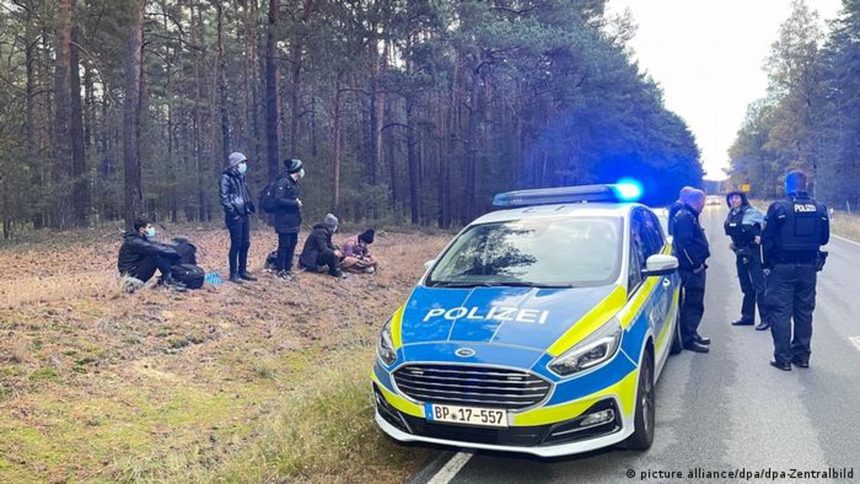At the Polish-German border: police detained migrants who entered Germany illegally.
The transfer of illegal migrants through Belarus and Poland to Germany does not stop: more than 6,000 people have already arrived on this route in Germany so far, says Nikita Zholkver from Deutsche Welle. How does the scheme work and what is Berlin doing to block this channel?
“The number of identified trespassers on the German-Polish border remains high,” Steve Alter of the German Foreign Ministry told SG. These are mostly refugees from Iraq, Iran, Syria, Afghanistan and Pakistan, who reach Germany from Belarus via Poland.
According to the Federal Office for Migration and Refugees (BAMF), more than 6,000 asylum seekers have arrived in Germany since the beginning of the year, with the largest number – 5,500 – since the beginning of August.
Their passports have Belarusian border stamps
All captured or voluntarily surrendered have passports with Belarusian border stamps, German police found. Therefore, there is no doubt that for their arrival in the EU, these people took advantage of the “Belarusian transit”, which – as they believe in Berlin – is open and exists not only with knowledge but also with the active support of the regime in Minsk.
According to the Dublin Regulation, migrants must, in principle, apply for asylum in the country where they first crossed the EU border. But most prefer not to register in Poland, making the effort to travel the 700km from the eastern to its western border unnoticed and without leaving their fingerprints in the EU’s dactyloscopic database. Many of the refugees managed to realize these intentions, which is why the number of those that Germany has reason to return to Poland is not large.
From Minsk to the Polish border
As a result of the interrogation of illegal migrants, the German border guards are already quite aware of exactly how “Belarusian transit” works. The refugees arrive in Belarus by air after transferring between 4,000 and 12,000 dollars for a 30-day visa to a deposit account of a travel agency in the country they are leaving from.
Upon arrival in Minsk, the “tourist” is taken, depending on the package of services purchased by him, either to a hotel or to a waiting room. When a group gathers, they put the people on a bus and take them to the western border. Some refugees even told German police that Belarusian border guards had helped them cross to the Polish side by cutting holes in the wire fence or using drones to find places for safe passage.
By public transport from Poland to Germany
Already on Polish territory, the refugees use the geolocation of their smartphone to determine the location of the person who will take them further west. This makes it difficult for Polish border guards to work, as refugees do not have telephone conversations that could be tapped.
In Poland, the transport is usually carried out with a small cargo van of the Fiat Ducato type, which can accommodate 30-40 people. The van is escorted by a car that travels several kilometers in front of it for reconnaissance purposes. And if you come across a roadside check, the route changes.
It also happens that smugglers are caught. A relatively large number – 14 people – were detained on October 22 on suspicion of aiding human traffickers. Among those detained are two Germans, the rest are citizens of Poland, Syria, Italy, Romania, Iran, Georgia and Uzbekistan.
The last stage – across the Polish-German border – is overcome in different ways: either by the same van, on foot, by taxi or by public transport – for example by bus №983, which travels from Slubice in Poland to Frankfurt on the Oder in Germany. Already on German territory, the refugees take selfies as proof that they have arrived safely, and only then the organizer of the “trip” receives his money. Everything is correct, there is no fraud.
What can Berlin do?
To stop the flow of migrants to Germany from Belarus, the German government is negotiating with both airlines flying to Minsk and the countries from which the refugees depart. An agreement has already been reached with Iraq to suspend direct flights to Belarus. However, according to German Foreign Ministry spokesman Christopher Burger, flights to Minsk from Damascus, Beirut and Amman via Istanbul and the United Arab Emirates have increased.
The negotiations with these countries are obviously also about the solid financial assistance that Germany is providing to them in the framework of development programs. It was the threat to cut off this financial source that prompted the Iraqi authorities to accept German demands.









